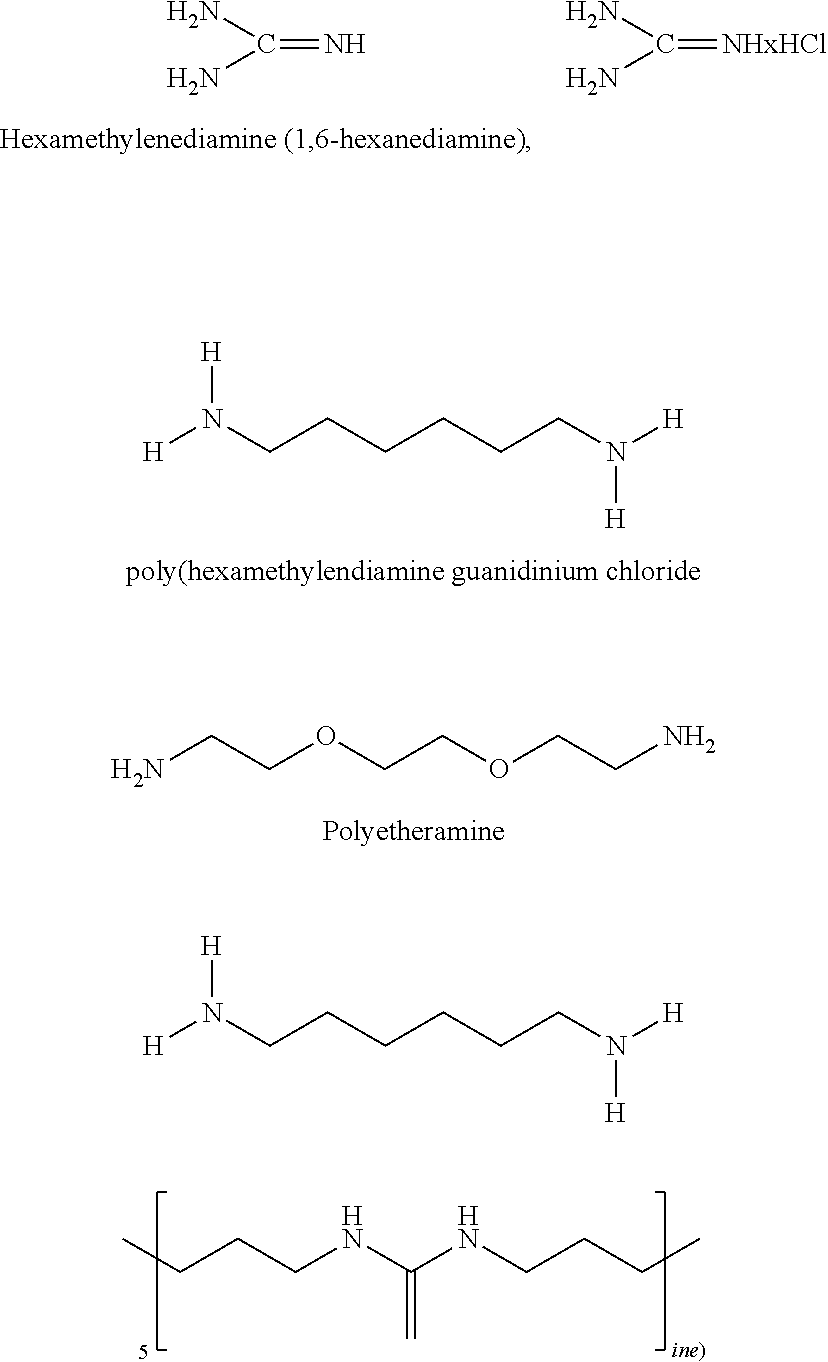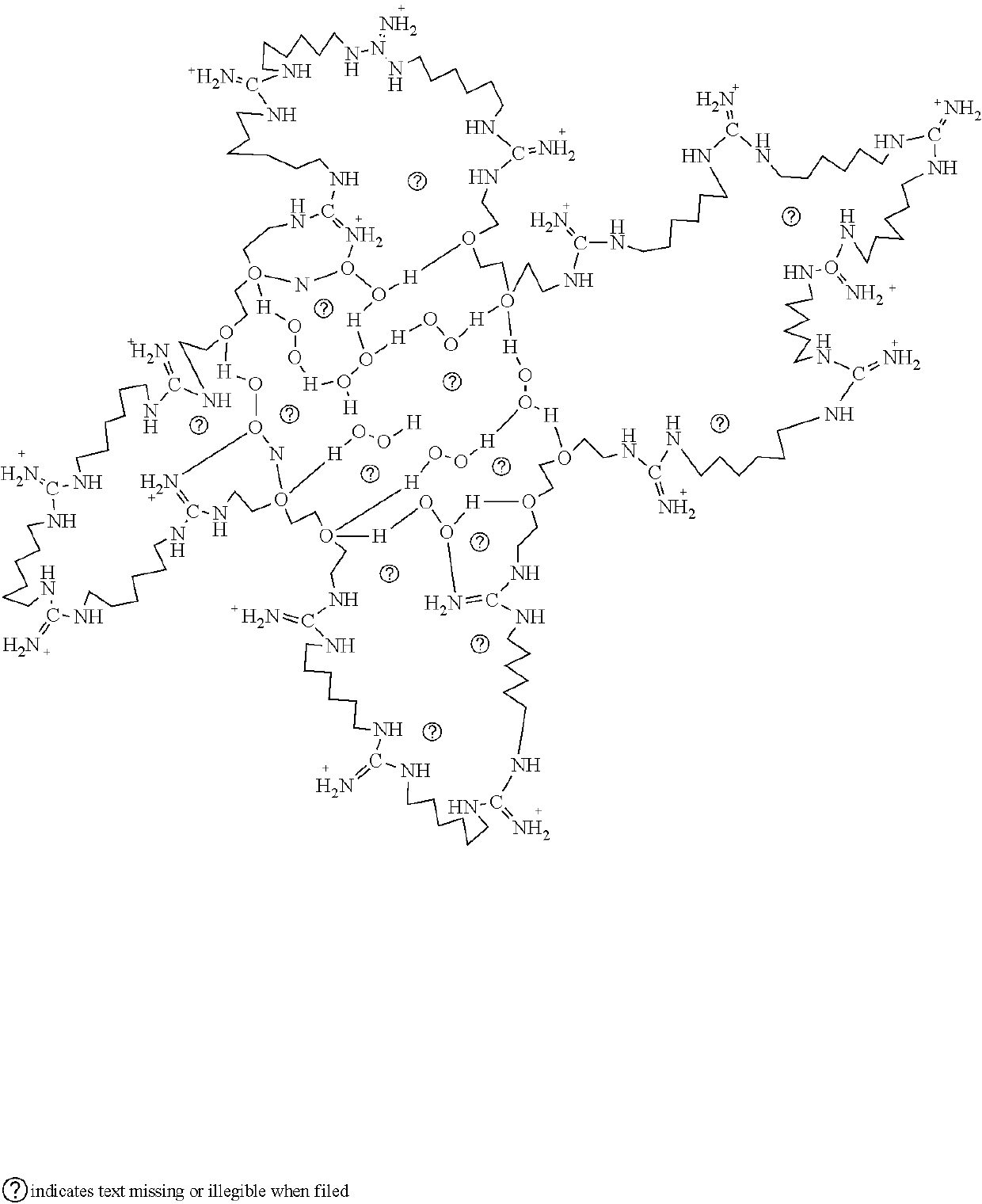This invention was related to
elimination of pathogenic micro-organisms on various surfaces, and air especially hard surfaces where such organisms may stay active for relatively long periods of time, has long been a goal of those charged with cleaning and maintaining an
antiseptic kitchens and bathrooms in the home, as well as in commercial and institutional settings such as hospitals, medical clinics, hotels and restaurants. A further goal has been to prevent the formation of allergens caused by growth of mold and
mildew on bathroom surfaces. This invention further relates to cleaning, sanitizing, disinfecting and mold and
mildew inhibiting compositions for non-porous hard surfaces such as glass (e.g., mirrors and
shower doors), glazed porcelain, metallic (e.g. chrome, stainless steel, and aluminum),
ceramic tile, enamel, fiberglass, Formica®, Corian® and plastic agent. This synthesis product having a pH of between 5.5 and 7.5 containing at least 3000 mg / l, preferably at least 2000 mg / l of a combination food protecting agent and guanidinium derivatives, particularly to combinations of oligo(2-(2-ethoxy)ethoxy ethyl
guanidinium chloride), poly(hexamethylendiamine
guanidinium chloride), polyetheramines, triethyleneglycol
diamine, enzymes, PGPR, amino acids, antioxidants such as humic acids and some natural products like phytotherapeutic
plant extracts.In accordance with the invention, a method for preventing, inhibiting or eliminating the growth,
dissemination and / or accumulation of microorganisms on a susceptible surface (including but not limited to the formation of biofilms) comprises the step of contacting such surface with an
antimicrobial agent, or composition thereof of the invention, with an amount sufficient to prevent, inhibit or eliminate such growth,
dissemination and / or accumulation, i.e., with an effective amount.As used herein “contacting” refers to any means for providing the compounds of the invention to a surface to be protected from, microbial growth and / or
biofilm formation. Contacting can include spraying,
wetting, immersing, dipping, painting, bonding,
coating, adhering or otherwise providing a surface with a compound or composition in accordance with the invention. A “
coating” refers to any temporary, semipermanent, or permanent layer, covering a surface. A
coating can be a gas, vapor, liquid, paste,
semi solid or
solid. In addition a coating can be applied as a liquid and solidify into a hard coating. Examples of coatings include polishes, surface cleaners, caulks, adhesives, finishes, paints, waxes, polymerizable compositions (including phenolic resins,
silicone polymers, chlorinated rubbers,
coal tar and
epoxy combinations,
epoxy resins,
polyamide resins vinyl resins, elastomers,
acrylate polymers, fluoropolymers, polyesters and
polyurethane, latex).
Silicone resins,
silicone polymers (e.g. RTV polymers) and
silicone heat cured rubbers are suitable coatings for use in the invention and described in the art. Coatings can be ablative or dissolvable, so that the
dissolution rate of the matrix controls the rate at which the compositions of the invention are delivered to the surface. Coatings can also be non-ablative, and rely on
diffusion principals to deliver a composition of the invention to the
target surface.The compounds and compositions of the invention are also useful for preventing microbial growth and / or biofilms in industries outside of health-related industries, such as
industrial systems wherein the presence of an aqueous environment leads to
biofilm formation. Examples of such systems include
metal working fluids, cooling waters (e.g. intake cooling water,
effluent cooling water, recirculatin cooling water), and other recirculating water systems such as hose used in
papermaking or
textile manufacture.Therefore, there is still a need to find and / or develop other bacterial, viral and fungicides for medium and surface
disease control. Some of the chemical as such are already known. It is also known, that these compounds can be used as more healthy and applicable material.
 Login to View More
Login to View More 


